
Mountain Streams --Vol.13--
Hooking is Difficult, Why?
Before I began fly fishing, I used to go back and forth between imaginary and real world through my fishing. A pull I feel at the tip of the rod, a float that repeatedly moves up and down, those things filled me with pleasure to imagine the move of fish and expectation. As far as I exactly catch a signal from fish I do not miss the timing of setting the hook to the fish. Just after I set it to the fish I find out the results. Nevertheless, because I do not see the very moment that the fish swallows the bait together with hook, all my judgement is still in the imaginary world, no matter how properly I set the hook to the fish. But if the fish stays in front of us and also in clear water, we will see the whole scene that the fish eats the bait. When I really came across such a scene I felt as if I had caught all fish around even before I caught one of them. Later I took up lure fishing and had enough of it. Finally, I was involved in fly fishing. Then I had many opportunities to see the moment that the fish ate the bait, in this case, the fly. Therefore, until I got sufficient experience of fly fishing, I could not understand why anglers said, "It's difficult to set the fly hook to the fish." Why is it difficult to set the hook when we see the moment that the fish bites the fly? I, a beginner of fly fishing, could not understand at all.
A big artificial waterfall of the mainstream of the Kimpusan River in 1972.
For my practice I used to go to a fishing farm in Tanzawa in the suburbs of Tokyo. The fishing farm was not common in Japan in those days. The river was so small that the fly was always drifting very near to me. I seldom lost sight of it and, probably, of rainbow trout or char that came up to it, either. Fish always came up to the surface from behind the rock and swallowed the fly. The instant they touched the fly, it was put into their mouth. So I had only to lift my rod when the distance between their nose and the fly became zero. Although the hook sometimes came off before I pulled up the fish on the land, I could set the hook to the fish quite well. It is no exaggeration to say that I could catch all fish that bit my fly.
A great pity was that some fish returned just after they came near to the fly. How can I tempt them to bite my fly? That was all my concern. I had not got the slightest idea that I had some trouble in my hook setting.
But what fundamentally shook my confidence happened soon. From 1972, I often went fishing to the Kimpusan River. There was a big artificial waterfall a few kilo metres up Kawahake Village. There were two big pools under it. In those days there were so many char in both pools that I never went home without a lot of trophy size char. There was no sign of decrease in fish, no matter how many fish I caught. Anyway, I noticed that I could set the hook quite easily to first five char. Then char responded in a different way and more and more times I set the hook to no fish. I could clearly see how the char jumped at the fly although it was nearly 15m away from me. No sooner had I made sure that it jumped at the fly than I set the hook to it. But my fly returned to me, only giving me a sensation of scratching the skin on the fish. Sometimes it returned without any sensation. It meant I could not hook up the jaws of the char although it jumped at the fly. It was because the fish did not bite enough of the fly. I understood that at once. But I wanted to hook up the jaws of that type of fish, too. What step should I take? Lack of experience sometimes induces people to a thoughtless plan. Recklessly enough, I started improving my flies.

The fish I hooked at the tail of the pool is running down the fast current.
The fly of 100 % hooking
I aimed at making the fly that never missed hooking up the jaws of the fish once it jumped at it. The dry fly is floating on the surface. Fish normally come up from underneath to the surface to bite the fly. Only sometimes fish jump into the air and grab the fly from above. It is called 'head and tail.' But it happens only when fish have got a big appetite, which never causes hooking troubles. In ordinary cases that fish come up from underneath, when the hook does not go into the fish mouth well, it is probably because hackle and tail are obstacles. The fly cannot float without them, so hackle and tail are indispensable. I needed to improve the fly so that the hook went into the mouth before hackle and tail stopped that.I picked up a fine long shank hook and bent its centre point inwards into a shallow V. Then I tied the fly on the eye-side half. My new Light Cahill looked quite well. Its hook went down longer without changing the whole shape of the fly. If fish try to swallow it from underneath, the hook will first go into fish mouth.

I devised the hook to make its hook tip go into the fish mouth first of all.
I could not restrain my excitement. Immediately I headed for the artificial waterfall in Kawahake Village with my new fly. Preparing for any situation, I cast the fly. It floated a bit unstably but began to drift with its longer hook downwards. I might have been in a highly nervous state. I felt that fish came up to the fly more slowly than usual. Fortunately, after several casting a brown lump came up to the surface and crossed my fly. Now is my chance! I lifted my rod but it turned upwards without any struggling. I could not believe my eyes. But it was true I could not set the hook to it. I was afraid that I might have set the hook to the fish too early. I had a feeling that I took a slightly rash action because I wanted to set the hook without a moment's delay. At the next chance I measured the timing very carefully. But my second fish pushed the fly with its nose repeatedly, so I could not catch the timing of setting the hook. Then my epoch-making fly sank into the water. Probably the hook was too large. Unfortunately, my experiment ended in failure.

Fish respond to the fly very honestly.
I wanted to make the hook longer and downwards without changing its size. It cost me a week to satisfy my requirements and finally I devised a revolutionary new style of the fly. Firstly I wound a lot of hackle around a fine wire hook to get well buoyancy. Then I cut the hook at the base of the tail. It meant that I wound the fly not around the hook but around the fine wire. Non-hook fly looked particularly real. Surely fish will dash to it wherever they stay. I hoped that my new hook went into their mouth before they swallowed the fly. I passed the leader through the fly eye and put the bare hook to the tip of the leader. It was perfect device. The fly looked utterly real and highly buoyant because the leader only passed through the eye. It is sure the hook will directly go into their open mouth when fish try to swallow the fly from underneath. In addition, the fly will remove from fish after hooking up their jaw, so the fly will never be worn out.

I believed that this was a perfect fly but-----
I waited more impatiently for my second experiment than the first time. Putting my treasure fly in the fly box, I headed for the artificial waterfall again. Many char usually appeared from a line of the flow in the lower pool----as I mentioned before, there were two pools under the artificial waterfall.----First thing there, I cast my revolutionary new fly along the flow line. My fly was drifting on the surface, keeping a little different posture from usual. When it began to pass the heart of the stream, my excitement nearly choked me. But it crossed there without any happening. At the second casting nothing happened. And at he third casting, nothing. No matter how many times I cast the fly, it only drifted on the water quietly.
I gave up the lower pool and went to the upper pool. I checked the fly again to be absolutely sure. It is perfect! Once fish bite the fly they will be destined to swallow the hook. Although I am impatient to test my fly, no fish appear in the upper pool, either. How unlucky I am! After several casting I felt a sign that something had just moved under the fly. I cast the fly again. When it approached the same place, a fish finally appeared. I've got it! I triumphantly lifted my rod. But, alas, only my rod flew through the air. It's too bad! But I was not so discouraged because I saw very poor response of the fish. It was no wonder that I could not set the hook to such a dull fish. Immediately I cast the fly again. But no fish appeared again.

Traditional flies still catch a lot of fish.
It's strange. Was there something wrong? Usually fish appear much more frequently in this pool. Was there a fisherman before me? Why have I got a bad situation whenever I try my epoch-making flies? How should I test my fly and know its results?
I complained to myself about the unlucky situation. Then I decided to go back to the road to fish another spot as I wanted to test my revolutionary new fly as soon as possible. There was a path leading up to the forest path at the lower reaches of the artificial waterfall and I was heading for the bottom of the path. When I passed by the lower pool where I had first cast my new fly on that day, somehow I had a feeling that I had to stop. For some reason I wanted to cast my regular fly once more. I had no expectation but just wanted to take all possible measures.
I picked up my old Royal Coachman from my fly box, put it to the leader quickly and floated it on the head of the pool. I watched the fly, thinking I did not need such a careful check. Only a few seconds later, however, a brown reflection came up from the river bed just downstream. It directly hit against my old fly on the surface. I moved my hand instinctively and felt the pleasant pull from the fish. What a shame! If the fish had responded to my new fly like this, I could easily have proved that its hooking performance was quite well. So thought I, unknown the truth at that stage. Now I landed that char as usual and cast the fly again in the head of the pool in the same way. Only a few seconds later again, a char came up to the surface from a little more downstream than the first one. It bit the fly very firmly, too.

Spent Badger held the fish jaw tightly. This is the most reliable fly indeed.
After I landed two fish, my confidence was shaken for the first time.--- Well, let me see. Probably two catches now are owed to the fly pattern, Royal Coachman. On the other hand, I used Light Cahill as my experiments, which must be the reason that fish did not respond to my new fly. Anyway, I have to prove my guess is right. --- Then I put the regular pattern of Light Cahill to the leader and hurried to float it on the head of the pool. It passed through the flow where the char had appeared just before and into the middle of the pool without any response. I did not know whether I really wanted a fish to appear or not. I watched the fly with such mixed feeling when the third char swallowed it. Oh, no! What ridiculous devices I had made for these two weeks! How stupid I was to consider them as revolutionary new! I have never blushed at my own stupidity more. Fortunately, there was no angler about. I was relieved to know no one saw my foolish experiment. I was really in cold sweat.
-- To be continued --
- NET SHOP INFORMATION
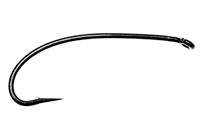
SL6 Black Spey Hooks
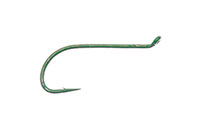
DU3 Limerick Spinner Hooks
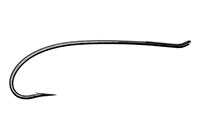
SL4 Single Bartleet Hooks
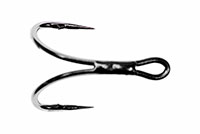
XD1 Tube Fly Double Hooks
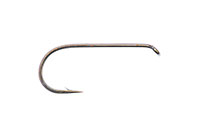
DD2 Flat Perfect Hooks
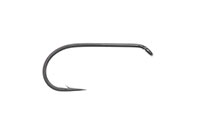
DD1 Black Terrestrial Hooks
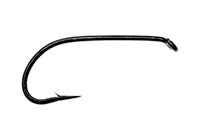
TD4 Old Limerick Wet Hooks
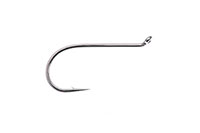
DU1 Silver May Hooks
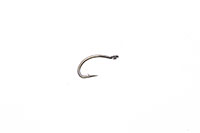
MU1 Flat Midge Hooks
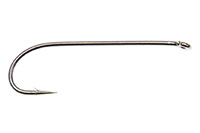
LD3 Long Limerick Hooks
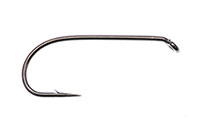
TD2 Summer Sproat Hooks
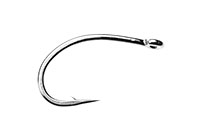
XS1 Tube Single Silver Hooks
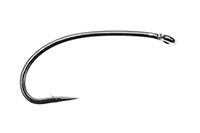
TD6 Siver Sedge Hooks

SL5 Black Spey Hooks

DU3 Limerick Spinner Hooks
- TROPHY CLUB
- FLY SHOW
- EXHIBITION
- MASTERS`
- FLY DRESSING CONTEST Archives
- TRAVELLER Archives
- TACKLE IMPRESSIONS Archives
- ANGLERS` PHOTO GALLERY Archives
- ----------------------------------------------
- トロフィークラブ
- フライショー
- エキシビション
- マスターズ
- フライドレッシング・コンテスト・アーカイヴ
- トラヴェラー・アーカイヴ
- タックル・インプレッション・アーカイヴ
- アングラーズ・フォトギャラリー・アーカイヴ
株式会社サワダ 185-0021 東京都国分寺市南町3-13-4
SAWADA'S INC. 3-13-4 Minamicho, Kokubunji, Tokyo 185-0021, Japan
写真・ドキュメントの無断転載を禁じます。
All the images and documents found on this site are owned by Ken Sawada and may not be used without permission.
But, link to this site is FREE.
Copyright © 2000 - 2024 SAWADA'S INC.. All rights reserved.
SAWADA'S INC. 3-13-4 Minamicho, Kokubunji, Tokyo 185-0021, Japan
写真・ドキュメントの無断転載を禁じます。
All the images and documents found on this site are owned by Ken Sawada and may not be used without permission.
But, link to this site is FREE.
Copyright © 2000 - 2024 SAWADA'S INC.. All rights reserved.
